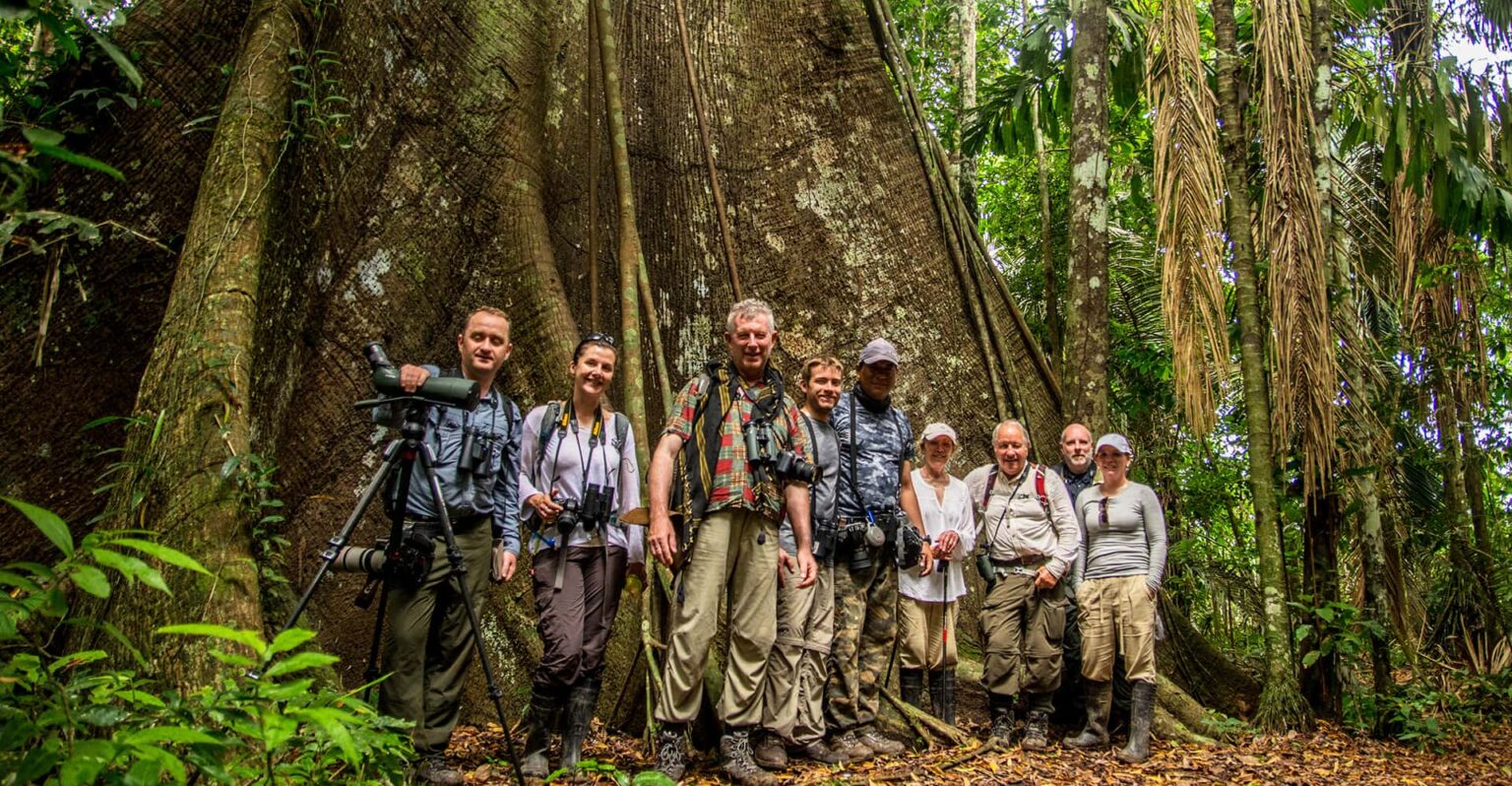
Manu Experiential Learning 10 weeks
This ten-week experiential learning Volunteer programme with Crees offers an in-depth, tangible life experience of conservation research and community development in Manu, one of the world’s most biodiverse reserves. It is an opportunity to live and work alongside conservation researchers and community development staff and understand the challenges they face on a day-to-day basis and what their work entails. As an organization dedicated to conservation research and sustainable community development, Crees’ programmes are designed to have a maximum impact that benefits first the local community and environment where they are based. Participants will learn what it takes to become an effective contributor to projects through a structured training process that looks to convert them into positive and valuable team members. This is an experience that will educate, inform and engage participants in the world of conservation science and community development, potentially furthering their career opportunities and life!
DURATION
LODGING
TYPE
Inside the Experiential Learning Experience
Day 1 and Day 2 – Programme Arrival and Introduction: Cusco
Airport or local hotel pickup and transfer to accommodation. Participants can use this day to rest, acclimate and explore in Cusco.
Crees has a formal briefing in the early morning to meet fellow participants and learn more about the programme. After registration, participants explore the ancient Inca capital experiencing Andean culture and its ever-changing environment, beginning to understand its role in shaping the Amazon’s future. The group goes to lunch together. Participants also use the day to ensure they have all the right equipment and supplies before heading off to the rainforest the following day.
Accommodation: Hostel in Cusco
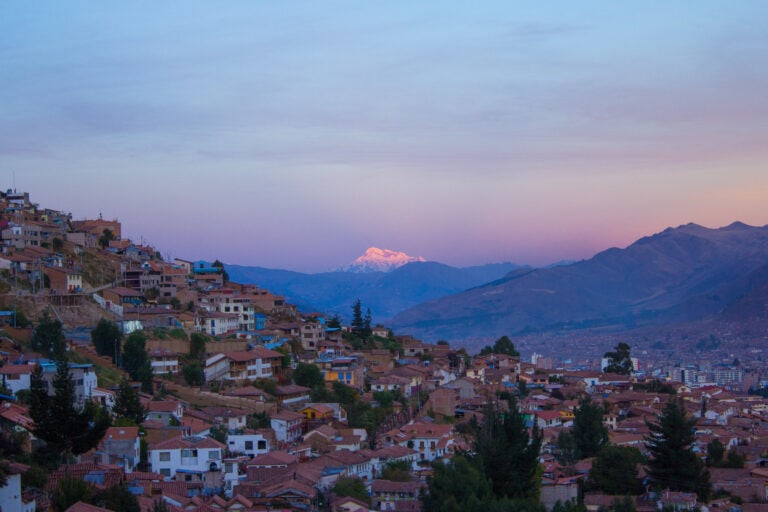
Day 3 – Journey to Manu Cloud Forest
Leaving the Inca Capital at first light, participants begin the day and a half journey over the Andes, through cloud forest into lowland Amazon. This is a spectacular route along dirt roads, cutting through incredible mountain terrain before reaching the start of the Manu Biosphere Reserve, a UNESCO world heritage site and most biodiverse place on the planet. The journey connects with local towns and people and explores how locals live in such a harsh yet stunning environment. Participants will learn about the impact of climate change on ecosystems and the specific relevance of cloud forests, getting the opportunity to walk through the forest and potentially meet Peru’s iconic national bird, the Cock of the Rock. Participants can head out to explore the cloud forest at night on an optional night walk or rest up at the lodge.
Accommodation: Manu Cloud Forest Lodge
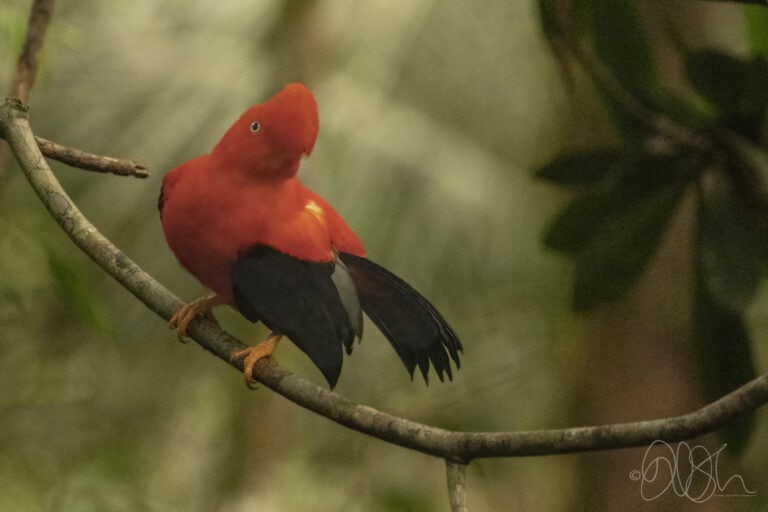
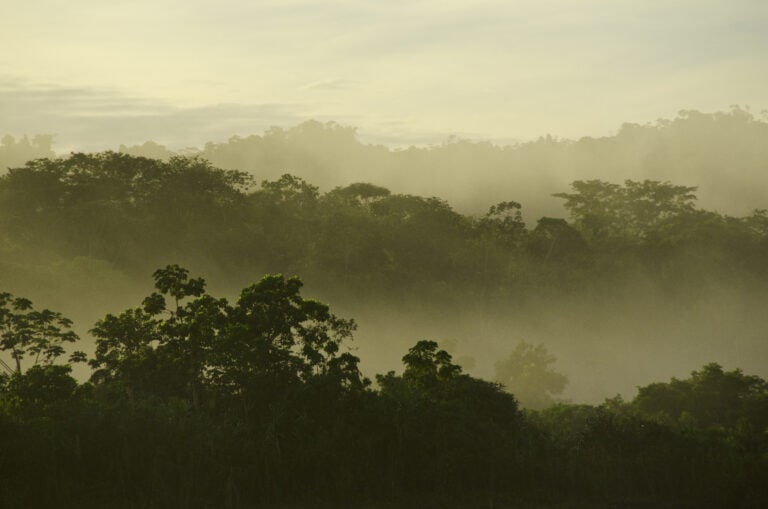
Day 4 – Arrival in lowland Amazon – Manu Learning Centre
Descending a further 3 hours through the foothills of the Andes to the lowland Amazon, on route participants get a taste of rainforest climate and life. Meet local farmers who produce the sacred coca leaf and other medicinal plants, their properties and what they are used for. The final spectacular stage of the journey is a 10-minute boat ride downstream by the Alto Madre de Dios river to the Manu Learning Centre, our Biological Field Station & Research hub, on the meandering Amazonas river, the Alto Madre de Dios. After lunch the orientation MLC ́s buildings locations, services schedules, choose the rubber boots, risk assessment, rules and codes of conduct then the sign of the final documents. Then we get the first taste of a regenerating amazon rainforest going to “the Mirador”. At dinner, meet the crees community living and working, finally the Presentation about “The Introduction of the Crees”.
Accommodation: Manu Learning Centre for the rest of the programme
Day 5 – First Aid in the Field, Risk Assessment, health and safety.
An essential part of forming part of the field teams is knowing how to respond if someone is unwell or injured, or in the unlikely event of an emergency. It is crees health and safety policy that all participants assisting us for 4 weeks or longer are trained in first aid and emergency response specific to our reserve and local situation. We have fully qualified staff that teach the Emergency First Response programme. Volunteers must learn and need to know how to use a machete safely at some point during their programme.
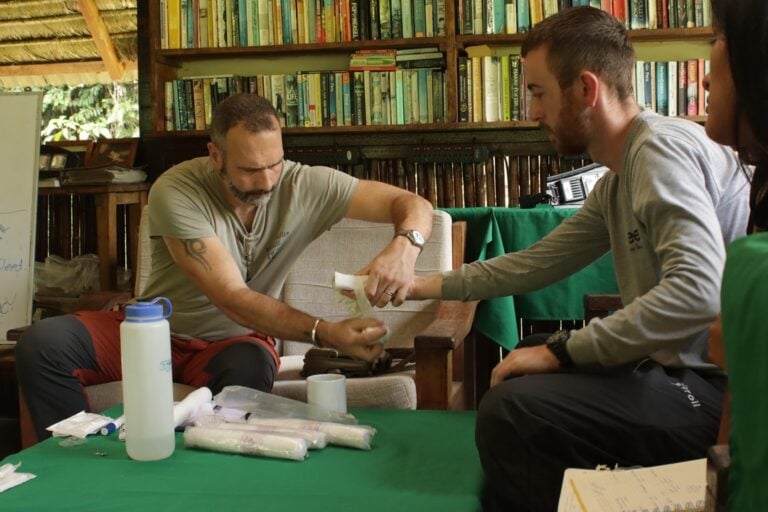
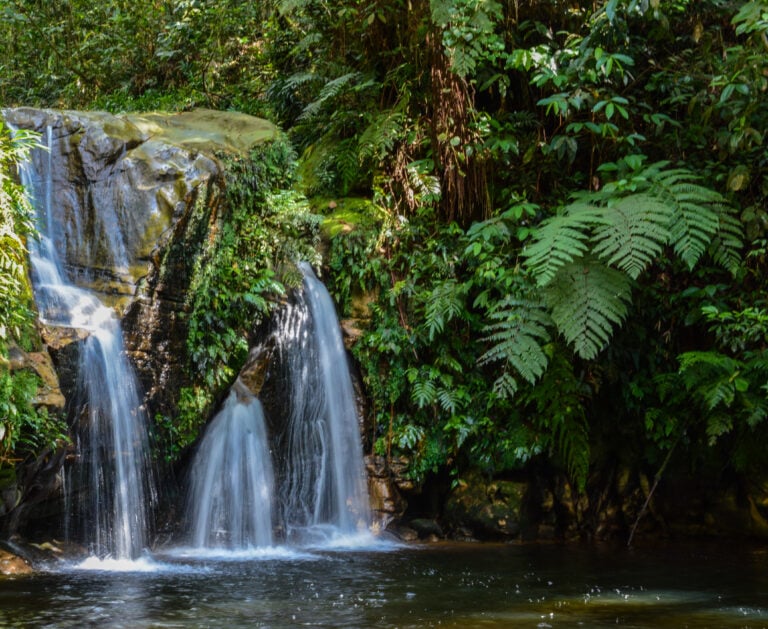
Day 6 – Visit a Sustainable Community Initiative: Shintuya Hot Springs
Participants can head further downstream after breakfast to visit the local community of Shintuya, their hot springs and waterfall. An opportunity to see more of the biodiversity & culture of Manu, this day trip is highly recommended. If participants stay at the Manu Learning Centre, they will be engaged in specific programme activities that relate to maintenance of the reserve and lodge, help on sustainable initiatives (bio gardens, water and waste management etc) and can even help out in the kitchen. Sunday is a day off for the permanent research team and so no conservation research activities will be available.
Day 7 – DAY OFF (SUNDAY)
Free time at the Manu Learning Centre is never boring! After a week full of activities, resting is necessary, and we are shure you will find the best way in our comfortable Manu Learning Centre. Sundays are perfect to enjoy a table or football game. You can also spend time talking with other volunteers, interns, visitors and researchers.
If you prefer, reading is another interesting activity, we have a lot of books in conservation and literature. Our camp is so big, you will always find an space to enjoy a walk, exercising or having a cup of coffee.
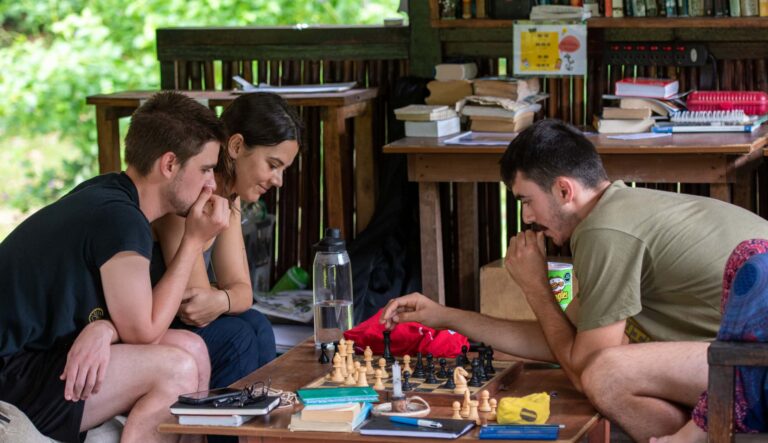
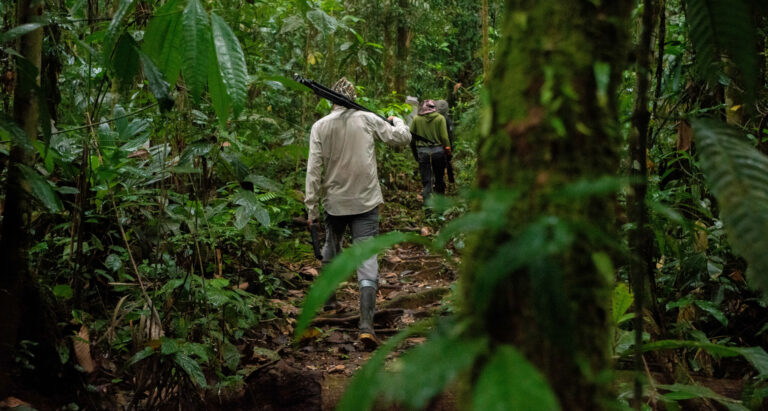
Day 8 – Training Day: Introductory to the research projects
The morning will be spent in the forest with field staff who will explain about tropical ecology and wildlife, and what you need to know about how our trail system and wildlife sighting recording process works. Further training on the conservation research projects will be conducted throughout the afternoon and night so you can be ready to start projectwork as soon as possible. Each new volunteer has about 30-40 minutes about “expectations”of the Experiential Learning Programme discussion held by a member of staff for the purpose of exp ressing expectations on both sides of the table. After dinner the Saturday Night Fun is a great time for fun activities and team bonding exercises.
Day 9 – Training Day: Community Development
Head off early to visit crees’ neighboring community, Salvacion to learn about crees’ sustainable community initiative. On route visit the community’s own sustainable tourism experience, a beautiful nearby oxbow lake named Machuwasi, it is fantastic for birdwatching. Then particip ants will meet the local project team who will explain how crees works with the local community, the challenges they face and what solutions are being developed as well as visiting an ongoing project. Returning to the Manu Learning Centre participants have a planning session with their supervisor to determine the best possible project involvement schedule based on participants backgrounds and interests and how they help meet crees’ needs. After the session participants can accompany field teams to assist with data collection in the forest or work in one of the MLC’s gardens, based on project availability. In the evening there is an official welcome party.
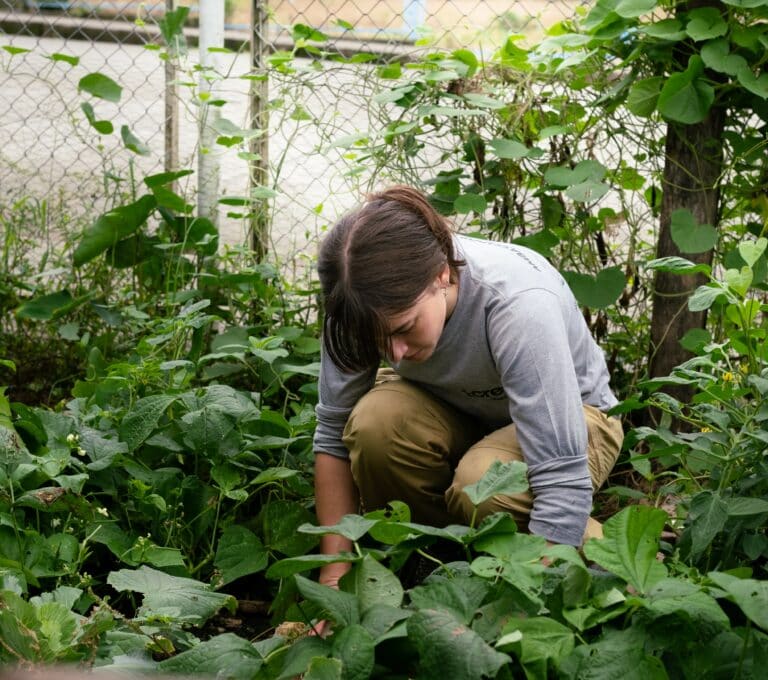
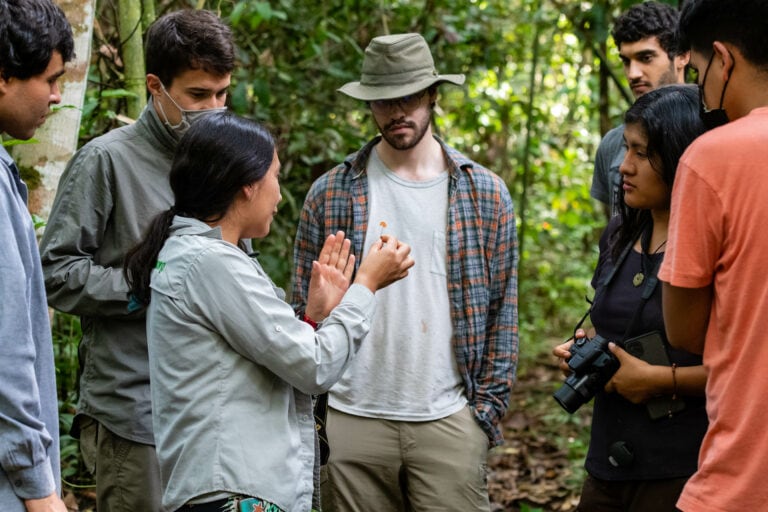
Day 10- 70 – Active Project Involvement
Participants will be engaged in a variety of conservation research or community project activities from Mon – Sat. Sundays are rest days so there is no conservation research or community project work.
Accommodation: Manu Learning Centre.
Day 71 – Return to Cusco
Departing after breakfast, participants travel a full day overland back to Cusco arriving in the early evening. This serves as an opportunity to settle any outstanding bills, collect personal items left in Cusco and organize ongoing travel.
Accommodation: Hostel in Cusco
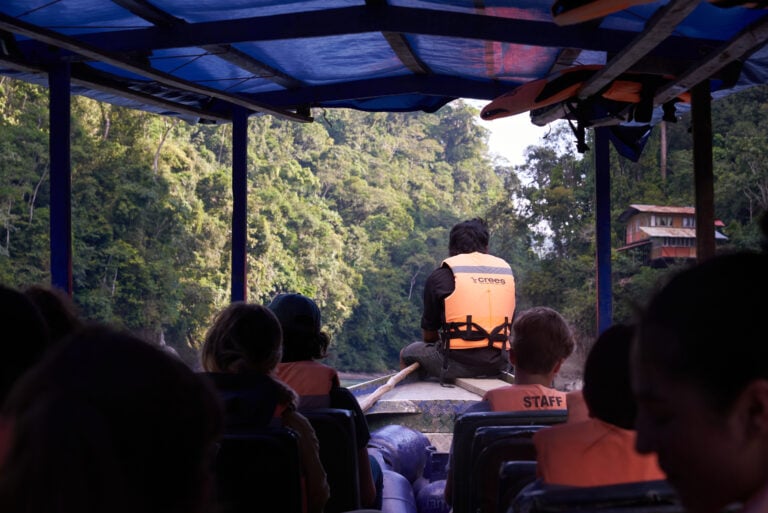
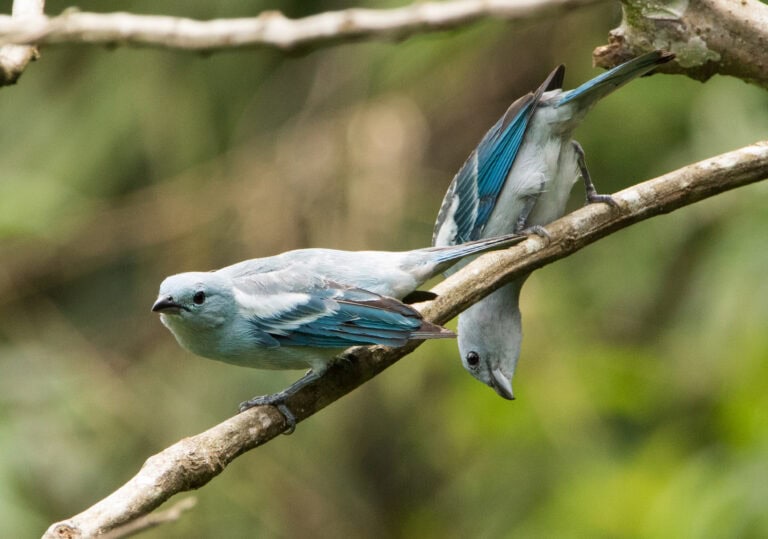
Day 72 – Sign off
We will pick you up from the hostel and take you to the airport.
By visiting the Manu Rainforest with Crees you will be actively supporting our conservation and community projects in the Amazon protecting nature and empowering local people.


